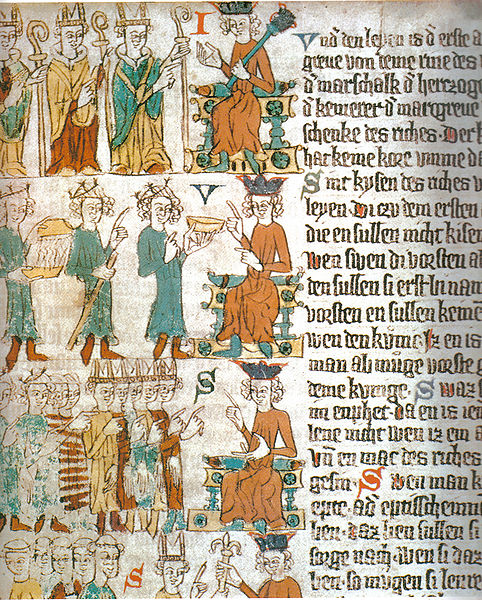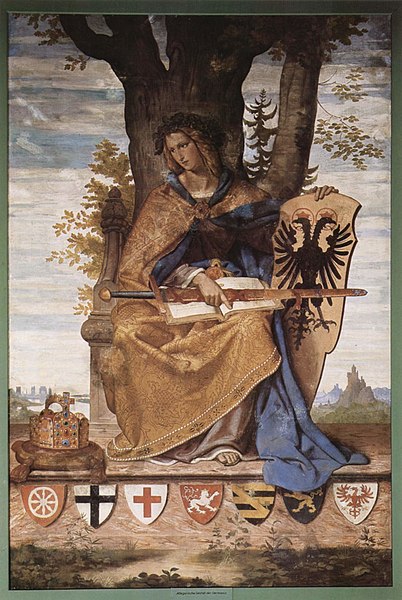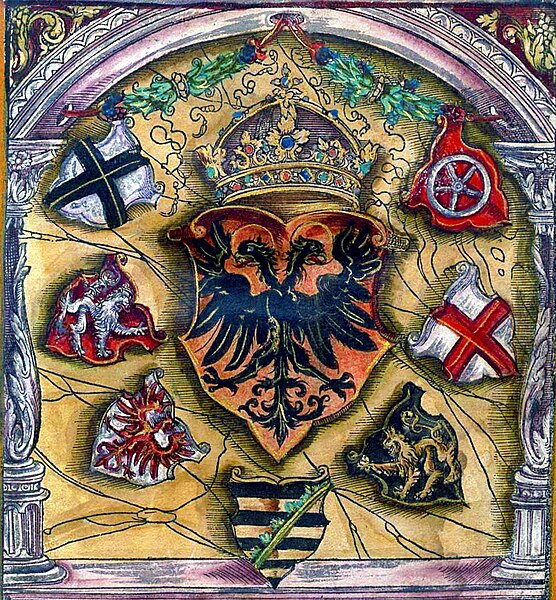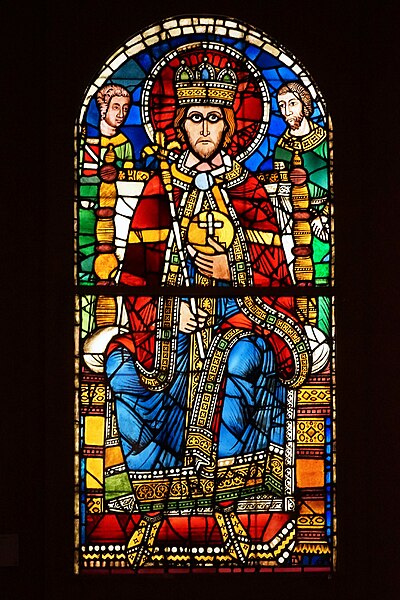The prince-electors, pl. Kurfürsten, Czech: Kurfiřt, Latin: Princeps Elector) were the members of the electoral college that elected the ruler of the Holy Roman Empire.
The imperial prince-electors Left to right: Archbishop of Cologne, Archbishop of Mainz, Archbishop of Trier, Count Palatine, Duke of Saxony, Margrave of Brandenburg and King of Bohemia (Codex Balduini Trevirorum, c. 1340)
Choosing the king. Above: the three ecclesiastical princes choosing the king, pointing at him. Middle: the Count Palatine of the Rhine hands over a golden bowl, acting as a servant. Behind him, the Duke of Saxony with his marshal's staff and the Margrave of Brandenburg bringing a bowl of warm water, as a valet. Below, the new king in front of the great men of the empire (Heidelberg Sachsenspiegel, around 1300).
Coats of arms representing the seven original electors with the figure of Germania. Original colours were vivid. Germania's gown was gold, not beige, and the blue-grey was purple. Also, the browns were painted as vivid red and the muted grey in Saxony's arms was a brilliant green.
Coats of arms of prince electors surround the Holy Roman Emperor's; from flags book of Jacob Köbel (163#+1545). Left to right: Cologne, Bohemia, Brandenburg, Saxony, the Palatinate, Trier, Mainz
The Holy Roman Emperor, originally and officially the Emperor of the Romans during the Middle Ages, and also known as the Roman-German Emperor since the early modern period, was the ruler and head of state of the Holy Roman Empire. The title was held in conjunction with the title of king of Italy from the 8th to the 16th century, and, almost without interruption, with the title of king of Germany throughout the 12th to 18th centuries.
Longest reigning Frederick III 19 March 1452 – 19 August 1493
Coats of arms of prince electors surround the imperial coat of arms; from a 1545 armorial. Electors voted in an Imperial Diet for a new Holy Roman Emperor.
Depiction of Charlemagne in a 12th-century stained glass window, Strasbourg Cathedral, now at Musée de l'Œuvre Notre-Dame.
Illustration of the election of Henry VII (27 November 1308) showing (left to right) the Archbishop of Cologne, Archbishop of Mainz, Archbishop of Trier, Count Palatine of the Rhine, Duke of Saxony, Margrave of Brandenburg and King of Bohemia (Codex Balduini Trevirorum, c. 1340).






